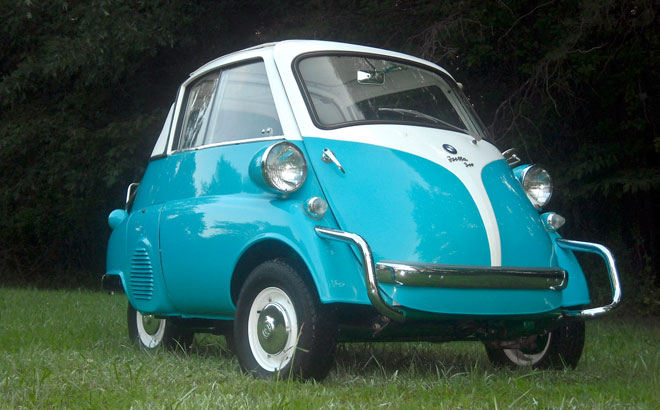This car has undergone a complete nut-and-bolt restoration. Powered by a 298-cc 1-cylinder, 4-stroke motor with 13 horsepower. The car has a 4-speed manual transmission with reverse, rack and pinion steering, coil springs in the front and leaf springs in the rear. Has a 12-volt electrical system and weighs approximately 780 pounds with a top speed of 53 mph and 50 mpg. Titled as a 1957 Isetta.
Chassis Number: 500311
This car has undergone a complete nut-and-bolt restoration. Powered by a 298-cc 1-cylinder, 4-stroke motor with 13 horsepower. The car has a 4-speed manual transmission with reverse, rack and pinion steering, coil springs in the front and leaf springs in the rear. Has a 12-volt electrical system and weighs approximately 780 pounds with a top speed of 53 mph and 50 mpg. Titled as a 1957 Isetta.

